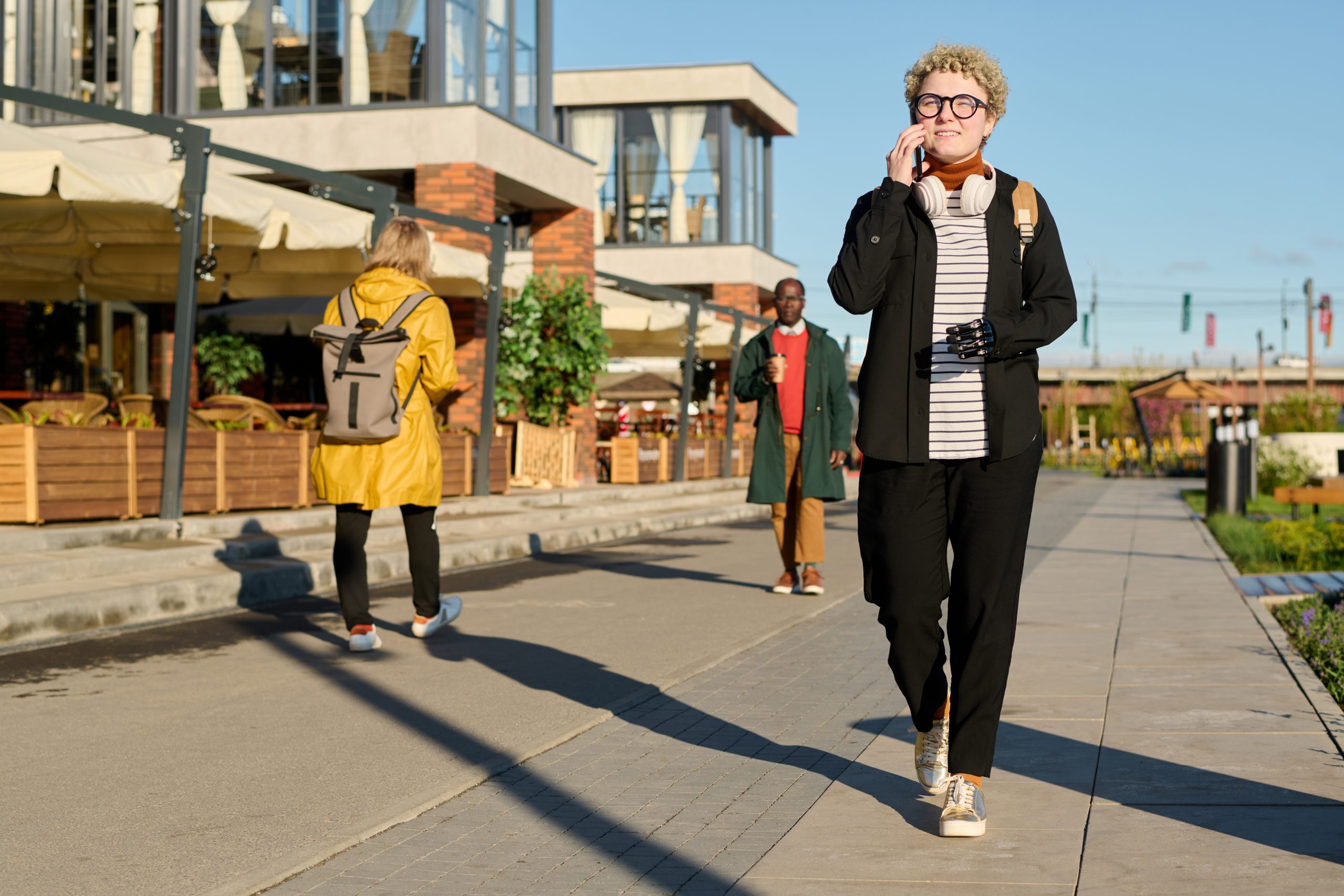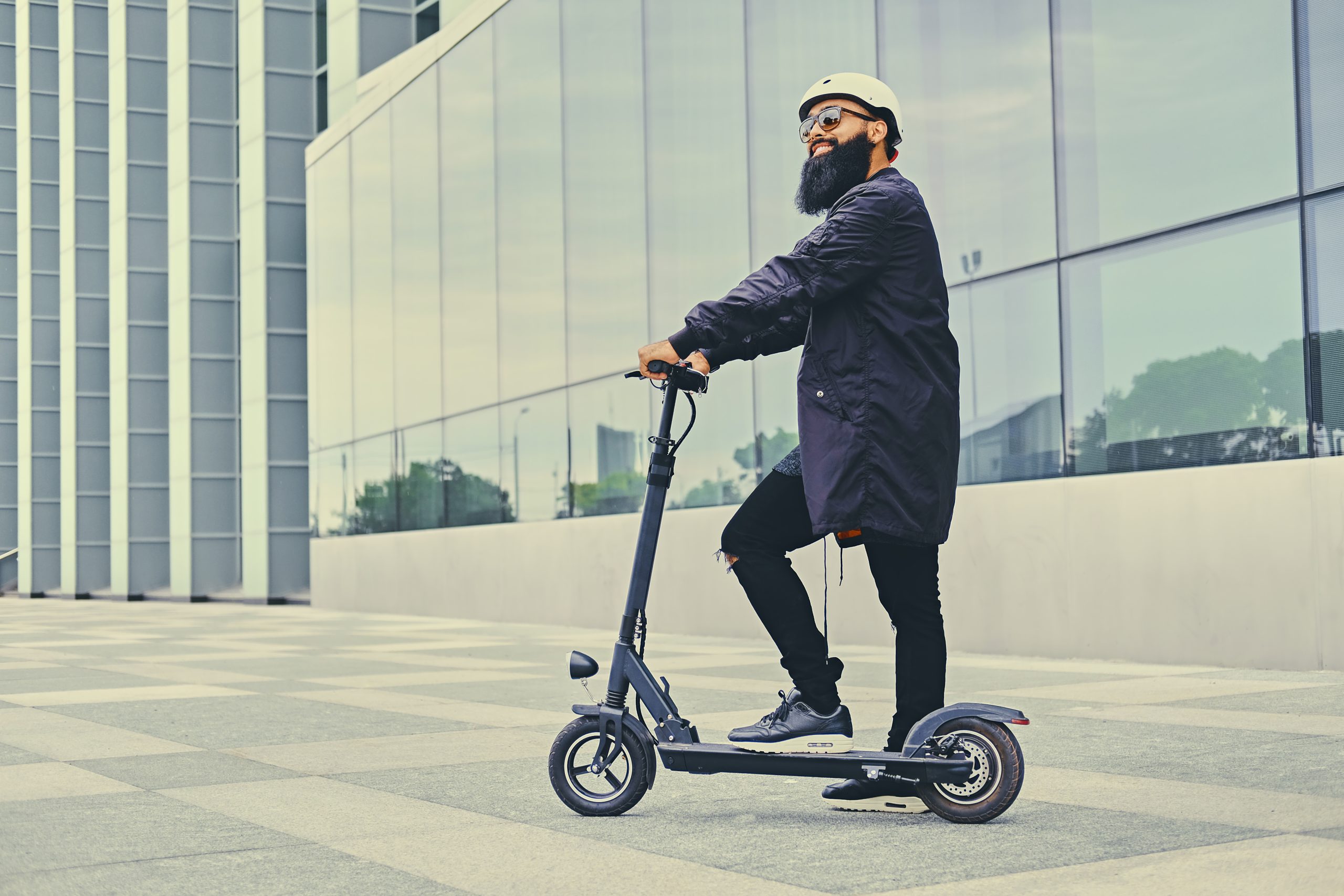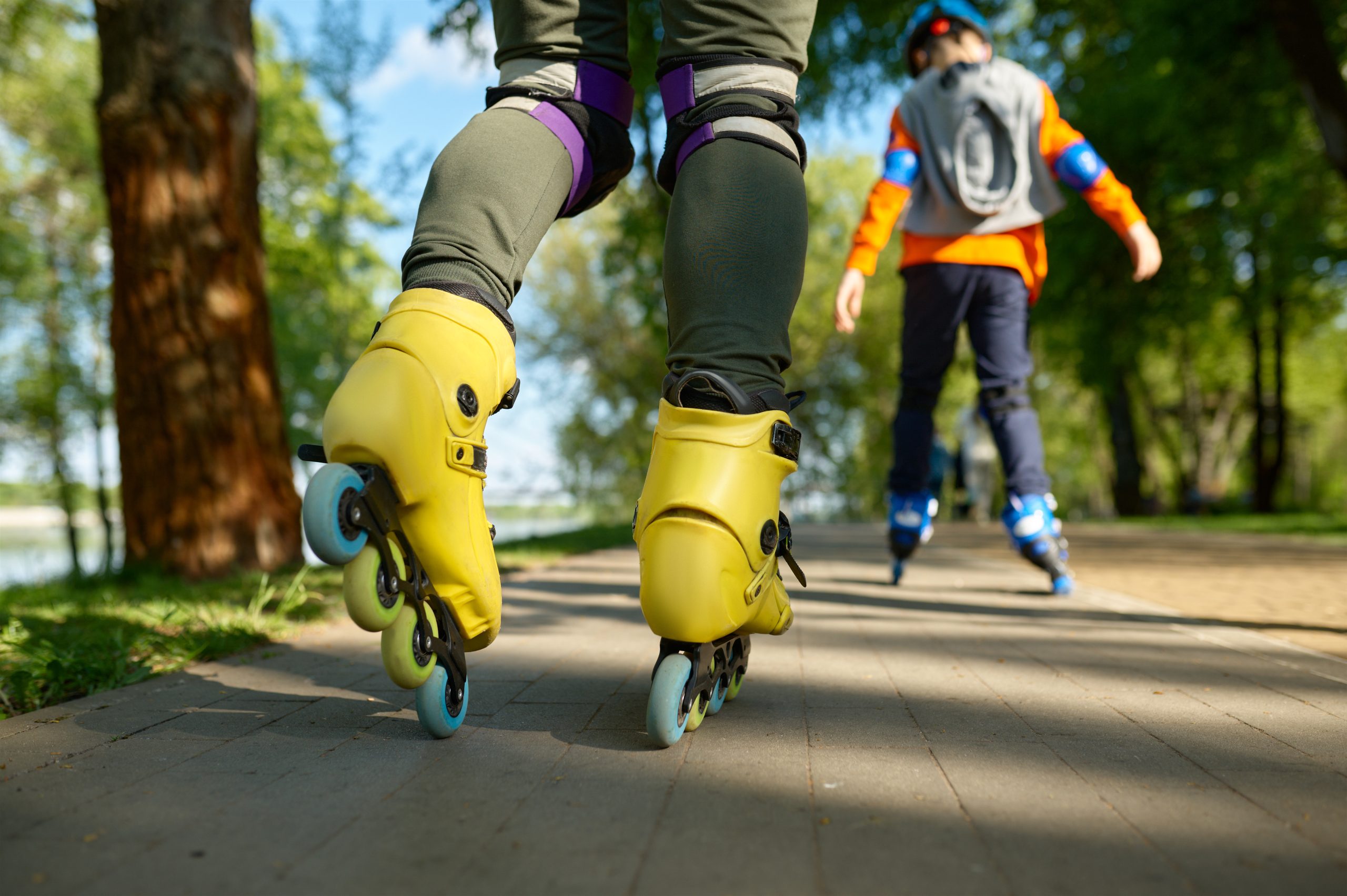Between work or school, family obligations, household chores, errands and your social life, you may find making time to get active challenging. But what if you could transform your daily responsibilities into physical activity? Enter active transportation – a simple way to stay active while getting from point A to B.
Quiz: How much do you already know about active transportation?
What is active transportation?
Active transportation is any form of human-powered travel, including walking, jogging, wheeling, cycling, rollerblading, roller-skating, skateboarding and scootering. Since taking public transit usually includes walking or wheeling between stations or stops, it can also count.
Unfortunately, not enough people in Canada are reaping the many benefits of active transportation. According to the 2021 Report Card on Physical Activity for Adults, just 39% of adults indicated either walking part or all of the way to get to work or school or to get around generally, and only 12% reported that they cycle either part or all of the way. And according to the 2024 Report Card on Physical Activity for Children and Youth, only 43% of parents reported that their kids commute actively to school or combine active modes of commuting with non-active options. This means we must do more to incorporate active transportation into our everyday lives.

But how do you get started? Read on to discover some benefits of active transportation and learn practical tips to help you make it part of your daily life.
4 key benefits of using active transportation
1. Improved health
Canada’s 24-Hour Movement Guidelines recommend that adults get 150 minutes of moderate-to-vigorous physical activity (MVPA) every week, and children and youth (five to 17 years of age) engage in 60 minutes of MVPA every day. Using active transportation can help you reach these physical activity goals and improve your health.
Whether it’s trips to and from work, school, shops or restaurants, leaving your vehicle at home and walking, jogging, wheeling, cycling, rollerblading, roller-skating or scootering can be the perfect way to sneak some active minutes into your week. Even walking to and from public transit stops can help you get eight to 33 more minutes of physical activity each day and accounts for 1,250 steps per trip on average. Active transportation can also decrease cardiovascular risk factors and help control diabetes.

2. Environmentally friendly
Not only can active transportation have a positive impact on your health but also on the environment. Specifically, active transportation results in reduced carbon emissions and air pollution. In fact, if just 1% of Canada’s population went from using private cars to active transportation, it would result in around $564 million in greenhouse gas emissions savings per year for Canada.
3. Budget-friendly
If you’re on a tight budget, leaving your vehicle at home will save you money on gas and parking fees. Plus, driving your vehicle less often means it will experience less wear-and-tear, reducing the chances you’ll need to spend money on frequent repairs or services.

4. Timesaving
Don’t have time in your day to dedicate to doing a traditional gym workout or playing a sport? Active transportation is an ideal way around this because it combines physical activity with commuting – something you most likely have to do anyway. On top of that, active transportation saves you the frustration of being stuck in traffic or finding a parking spot.
6 tips to make active transportation part of your routine
1. Start small and work your way up
Trying something new can feel intimidating, so if you’re new to active transportation, don’t overdo it. Begin by incorporating it into one part of your day, like parking farther from your destination, getting off the bus or train a stop early, or walking or wheeling to a local café or shop. As you get more comfortable, you can increase the distances and how often you use active transportation.

2. Select the right mode of active transportation
Not every type of active transportation will work for every trip. Think about what’s most appropriate or realistic for your lifestyle and destination:
- Walking or wheeling is ideal for shorter journeys or as part of trips involving multiple modes of transportation. For example, you could walk or wheel to and from a bus stop or train station.
- Cycling is great for moderate distances and offers an excellent heart-pumping workout. If you’re concerned about showing up at your destination sweaty or smelly, try commuting on an e-bike with pedal assist so you sweat less and/or bring deodorant and a change of clothes with you.
- Scootering, skateboarding, rollerblading and roller-skating work well in urban areas with dedicated paths or lanes.
3. Stay safe
- Wear a properly fitting helmet if you’re cycling or scootering.
- Wear wrist guards, and elbow and knee pads in addition to a helmet if you’re skateboarding, rollerblading or roller-skating.
- Obey traffic rules, especially when you’re sharing the road with drivers.
- Avoid texting on the go, even when you’re just walking or wheeling.
- Wear bright and/or reflective clothing and invest in bright lights to put on your bike, scooter, rollerblades, roller-skates, skateboard or helmet so you’re visible to drivers and pedestrians when it’s dark.

4. Prepare for the weather
Check the forecast before departing and dress accordingly. For instance, wear a raincoat and waterproof shoes on rainy days, layered clothing on cold days, and a sun hat and sunscreen on sunny days.
5. Plan safe, efficient and enjoyable routes
Use apps like Google Maps to help you pick the most efficient routes, ideally ones that include dedicated lanes for cycling, rollerblading, roller-skating and skateboarding, parks or pedestrian-friendly streets. If you can, steer clear of high-traffic areas for safer, not to mention more pleasant, trips. To make your active commutes more fun and social, invite family members, friends, neighbours or colleagues to join you.

6. Track your progress
Tracking your physical activity can be an excellent motivator. Use fitness apps such as Optimity or trackers like Garmin to see how many steps you take or how many minutes you move during your active commutes. Not only will this help keep you accountable, but it will also allow you to see the positive impact of active transportation on your own fitness and health over time. Plus, seeing your progress can be very rewarding.
As you’ve seen, active transportation is a simple, environmentally friendly, cost-effective and time-efficient way to keep active in your day-to-day life. By starting small, picking the right modes, taking safety precautions, planning ahead and tracking your progress, you can easily make active transportation part of your daily routine.









